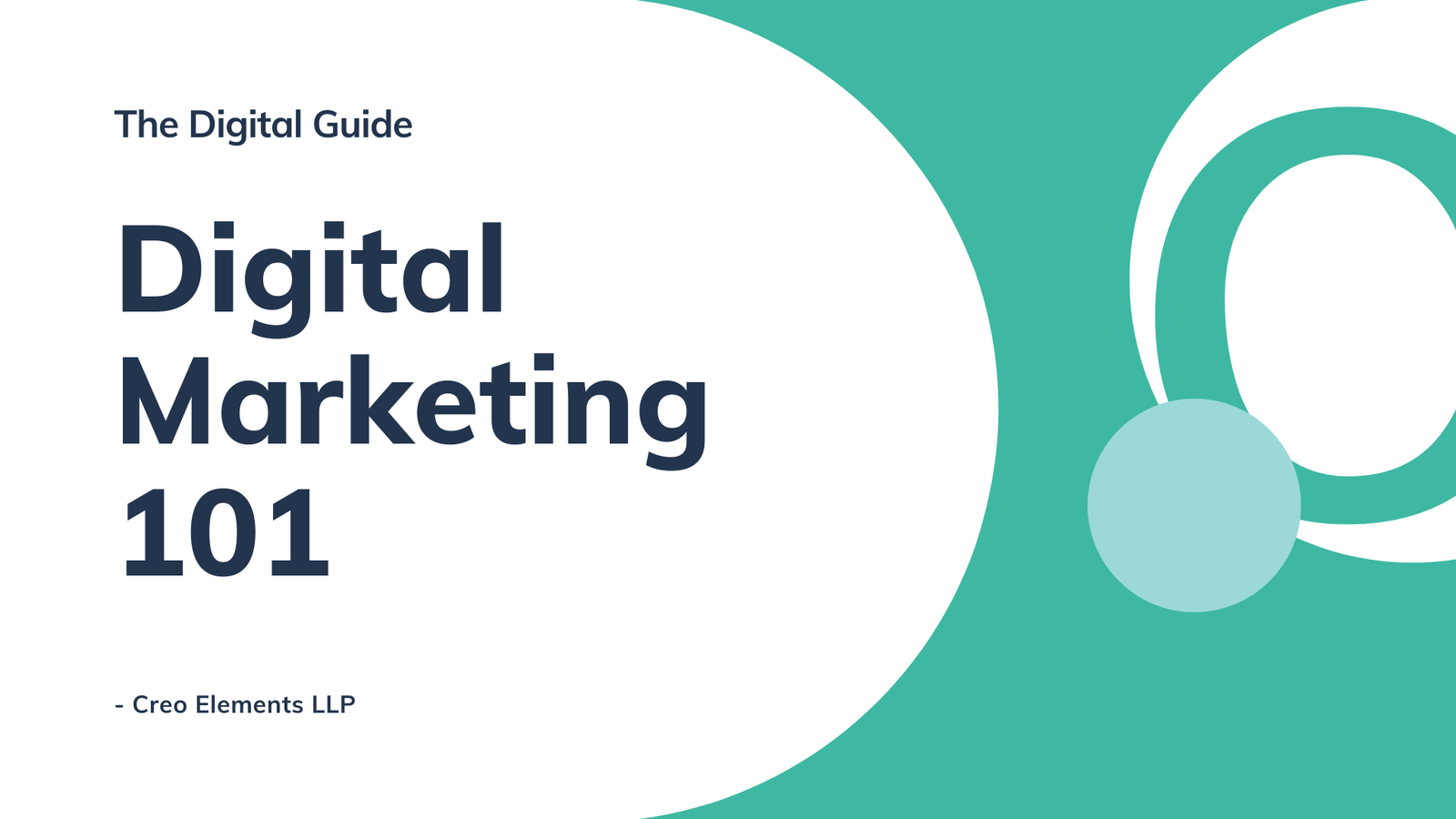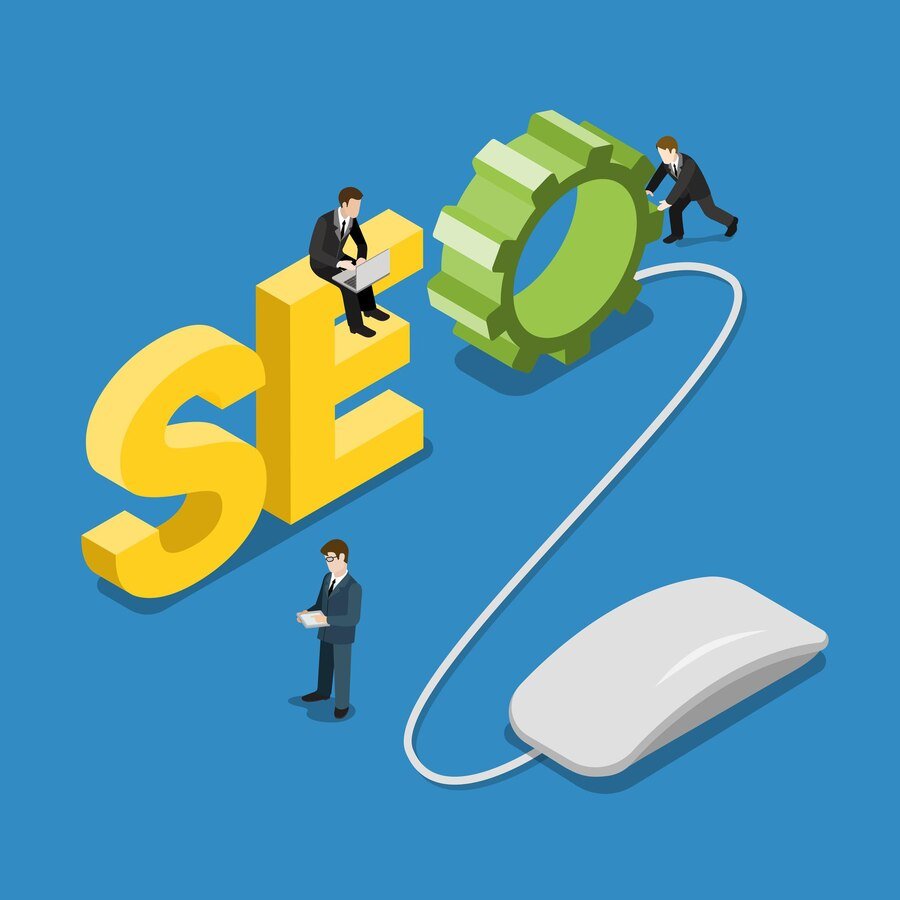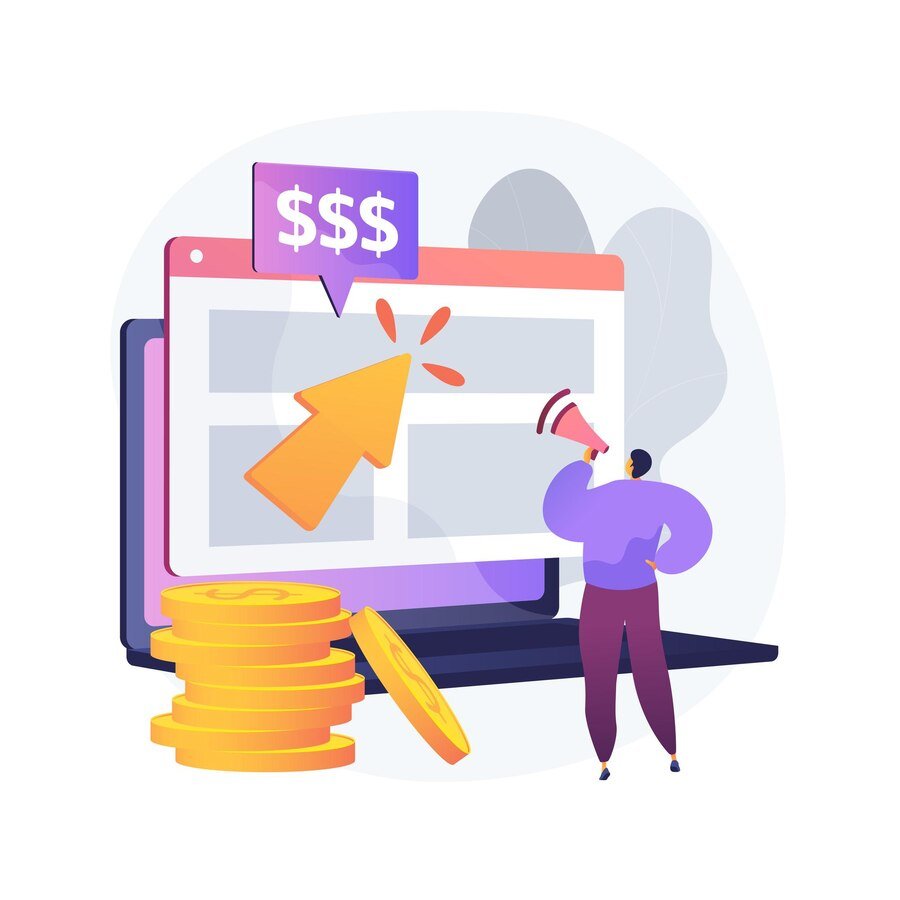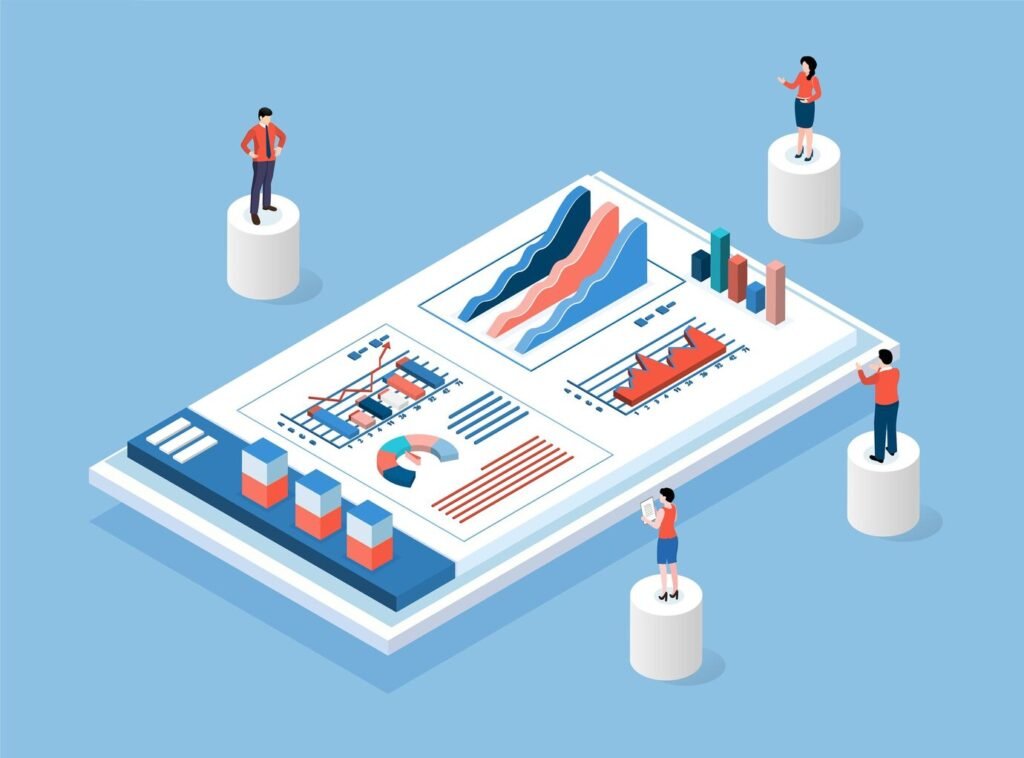Digital Marketing 101: A Beginner’s Guide to Online Success

Introduction
In today’s digital age, having a strong online presence is no longer optional—it’s essential for business growth and success. Whether you’re a small business owner or a growing brand, digital marketing plays a crucial role in reaching your audience, engaging with potential customers, and driving sales. With more consumers turning to the internet to research products and services, businesses must adopt digital marketing strategies to stay competitive.
Digital marketing encompasses various strategies that leverage the internet to promote products, services, and brands. Unlike traditional marketing methods, digital marketing offers measurable results, precise audience targeting, and cost-effective advertising solutions. In this guide, we’ll explore the fundamentals of digital marketing, its importance, key components, and how you can create an effective marketing strategy for your business.
What is Digital Marketing?

Digital marketing refers to all online efforts to promote a business, connect with customers, and build brand awareness using digital channels. These include websites, search engines, social media platforms, email, and paid advertisements. The goal is to attract and convert potential customers by providing valuable content and engaging experiences tailored to their needs.
Over the years, digital marketing has evolved from simple banner ads to sophisticated, data-driven campaigns that leverage AI and automation. Businesses can now target audiences based on their behavior, interests, and demographics, ensuring more relevant and impactful marketing efforts.
Why is Digital Marketing Important?

Digital marketing offers businesses an opportunity to reach a wider audience at a lower cost compared to traditional marketing. Here are some key advantages:
- Wider Reach: Unlike local advertising, digital marketing allows businesses to connect with audiences globally.
- Cost-Effectiveness: Online campaigns can be more affordable than print, radio, or TV ads, making it accessible for small businesses.
- Targeted Advertising: Digital tools enable precise audience segmentation, ensuring your message reaches the right people.
- Measurable Results: Unlike traditional marketing, digital campaigns provide real-time analytics to track performance and return on investment (ROI).
- Brand Engagement: Social media, email, and content marketing foster direct interactions with customers, building brand loyalty.
- Higher Conversion Rates: With strategic digital marketing efforts, businesses can convert website visitors into paying customers more efficiently.
Comparing digital marketing to traditional methods, businesses gain more flexibility and insight into consumer behavior. While billboards or newspaper ads reach a general audience, digital marketing ensures your advertising dollars are spent on people who are genuinely interested in your products or services.
Preparing for Digital Marketing
Before launching digital marketing campaigns, businesses must establish a strong foundation. A well-optimized website, a clearly defined target audience, and a structured brand identity are crucial. Here’s what you need:
- A Professional Website: Your website acts as your online storefront. It should be user-friendly, mobile-optimized, and visually appealing.
- Defined Target Audience: Understanding your ideal customer helps tailor marketing efforts for better engagement.
- Clear Business Goals: Set measurable objectives like increasing website traffic, generating leads, or boosting sales.
- Consistent Brand Messaging: Your brand voice, colors, and values should be reflected across all digital platforms.
- Basic Analytics Knowledge: Tracking performance using Google Analytics and other tools ensures informed decision-making.
Key Components of Digital Marketing
Digital marketing includes various strategies that work together to create a strong online presence. The main components are:
Search Engine Optimization (SEO)
SEO helps websites rank higher on search engines like Google, making it easier for potential customers to find your business. It involves keyword research, high-quality content, backlinking, and website optimization.
Social Media Marketing (SMM)
Using platforms like Facebook, Instagram, LinkedIn, and Twitter, businesses can engage with audiences, build brand awareness, and drive website traffic through organic and paid campaigns.


Pay-Per-Click (PPC) Advertising
PPC ads appear on search engines and social media. Advertisers pay per click, ensuring their budget is spent on potential customers actively searching for their products or services.
Content Marketing
High-quality content—blogs, videos, infographics, and more—helps educate, entertain, and attract potential customers, positioning your business as an industry authority.
Email Marketing
Email campaigns nurture customer relationships, deliver promotions, and drive conversions. Personalized emails increase engagement and brand loyalty.
Influencer & Affiliate Marketing
Partnering with influencers and affiliates helps expand brand reach by leveraging their established audiences.
Organic vs. Paid Digital Marketing


Businesses often navigate between organic and paid digital marketing strategies, each offering distinct advantages and challenges.
Organic Marketing:
Long-Term Growth & Credibility
Organic marketing relies on strategies like SEO, content marketing, email newsletters, and social media engagement to attract and retain customers without direct ad spend. While it requires patience and consistent effort, the benefits are long-lasting. High-quality content, optimized websites, and strong community interactions can establish brand authority, improve search rankings, and drive steady traffic over time.
Key benefits of organic marketing:
- Builds brand trust and credibility
- Generates sustainable, long-term traffic
- Strengthens customer relationships through engagement
- Cost-effective but requires time and effort
Paid Marketing:
Immediate Reach & Targeted Results
Paid marketing includes pay-per-click (PPC) advertising, social media ads, sponsored content, and display advertising to gain immediate visibility. These campaigns allow businesses to target specific audiences based on demographics, interests, and behavior. While highly effective for short-term goals, paid strategies require continuous investment to maintain traffic and conversions.
Key benefits of paid marketing:
- Delivers fast, measurable results
- Allows precise audience targeting
- Enhances brand awareness in competitive markets
- Scalable with budget adjustments
Finding the Right Balance
A successful digital marketing strategy blends both organic and paid efforts. Organic marketing nurtures long-term growth, while paid marketing helps accelerate visibility and conversions. By leveraging SEO-driven content alongside strategic advertising, businesses can maximize reach, engagement, and return on investment.
Creating a Digital Marketing Plan

A successful digital marketing plan involves several key steps to ensure a structured and results-driven approach:
1. Define Clear Objectives
Start by establishing measurable and realistic goals based on your business needs. Common digital marketing objectives include:
- Brand Awareness – When launching a new business, entering a new market, or introducing a new product/service.
- Lead Generation – When you need to build an email list, grow a customer database, or attract potential buyers for long-term sales.
- Customer Engagement – When you want to nurture relationships, build loyalty, or keep your audience actively involved with your brand.
- Sales Growth – When your primary goal is to increase revenue, convert leads into customers, or scale your business.
💡 Pro Tip: Set goals that are clear and trackable using the SMART framework:
- Specific – Clearly define what you want to achieve.
- Measurable – Ensure progress can be tracked with data.
- Achievable – Set realistic and attainable goals.
- Relevant – Align goals with your overall business strategy.
- Time-bound – Set a deadline to stay on track.
2. Identify & Understand Your Target Audience
Your marketing efforts will only be successful if they reach the right people. Conduct thorough research to identify your ideal audience based on:
- Demographics: Age, gender, location, income level, and profession.
- Psychographics: Interests, values, lifestyle, and purchasing behavior.
- Online Behavior: Social media usage, search intent, and preferred content formats.
3. Choose the Right Marketing Channels
Selecting the best platforms depends on your audience, industry, and goals. Here’s a breakdown of where to focus:
|
Marketing Channel |
Best For |
Example Strategies |
|
Search Engine Optimization (SEO) |
Organic website traffic |
Keyword optimization, on-page SEO, backlinks |
|
Social Media Marketing |
Engagement & brand awareness |
Content marketing, influencer collaborations, social ads |
|
Email Marketing |
Lead nurturing & retention |
Newsletters, automated drip campaigns, promotional offers |
|
Paid Advertising (PPC) |
Quick lead generation & conversions |
Google Ads, Facebook Ads, LinkedIn Ads |
|
Content Marketing |
Thought leadership & brand trust |
Blogs, videos, infographics, case studies |
💡 Pro Tip: Don’t try to be everywhere—focus on the 2-3 platforms where your audience is most active and engaged.
4. Develop a High-Impact Content Strategy
Content is the backbone of digital marketing. Plan content that informs, entertains, or solves your audience’s pain points. Consider these formats:
- Blog Posts & Articles – Drive organic traffic and establish expertise.
- Videos & Live Streams – Engage audiences on social media and YouTube.
- Infographics – Simplify complex data into shareable visuals.
- Case Studies & Testimonials – Build trust and credibility.
- Webinars & E-books – Educate and nurture potential leads.
💡 Pro Tip: Use a content calendar to schedule posts consistently and track performance.
5. Allocate Budget & Resources Wisely
Budgeting ensures that your digital marketing efforts are cost-effective and sustainable. Here’s how to allocate funds:
- 30-40% on Paid Advertising (Google Ads, Facebook Ads, influencer marketing)
- 20-30% on Content Creation (blog writing, video production, graphic design)
- 10-20% on SEO & Website Optimization (technical SEO, UX improvements)
- 10-20% on Tools & Software (analytics, automation, email marketing tools)
💡 Pro Tip: Start with a small budget, test different strategies, and scale what works.

Best Practices & Tips
To maximize digital marketing success, consider these key strategies:
Stay Updated with Trends & Algorithms
The digital landscape is constantly evolving. Search engines, social media platforms, and ad networks frequently update their algorithms. Subscribe to industry blogs like Moz, HubSpot, and Search Engine Journal, and follow key players on LinkedIn to stay ahead.
Create Valuable & Engaging Content
Quality content is the backbone of digital marketing. Focus on solving problems, answering questions, and engaging your audience through blogs, videos, infographics, and interactive media. Storytelling, user-generated content, and personalization can significantly boost engagement.
Leverage Influencer & Strategic Partnerships
Collaborate with influencers and industry experts to expand your reach. Micro-influencers (those with niche but highly engaged audiences) often offer better ROI than big-name influencers. Strategic partnerships with complementary brands can also amplify visibility and credibility.
Use Data-Driven Insights for Optimization
Track your campaigns using tools like Google Analytics, Facebook Pixel, and heatmaps to understand user behavior. Use A/B testing to refine your strategies—whether it’s tweaking ad creatives, subject lines, or CTA placements. The more data-driven your approach, the better your results.
Be Patient & Stay Consistent
Digital marketing isn’t an overnight success game. SEO can take months to show results, and organic social media growth requires persistence. Focus on long-term brand building, community engagement, and consistent messaging. Over time, these efforts compound into sustainable success.
What to do now
Feeling overwhelmed by the sheer volume of digital marketing tasks? Creo Elements LLP understands. It is a lot to juggle. That’s why we’re here. We can help you simplify your digital marketing efforts and focus on what you do best – running your business. We offer a wide range of services to cover all your digital needs, from social media management and website optimization (SEO) to branding, photography, packaging design, and more. Whether you need help with a specific area or want a comprehensive digital marketing strategy, we can tailor our services to fit your needs and budget. Don’t let the complexities of digital marketing hold you back. Contact us today for a free consultation and let’s explore how we can make your online success a reality – without the overwhelm.